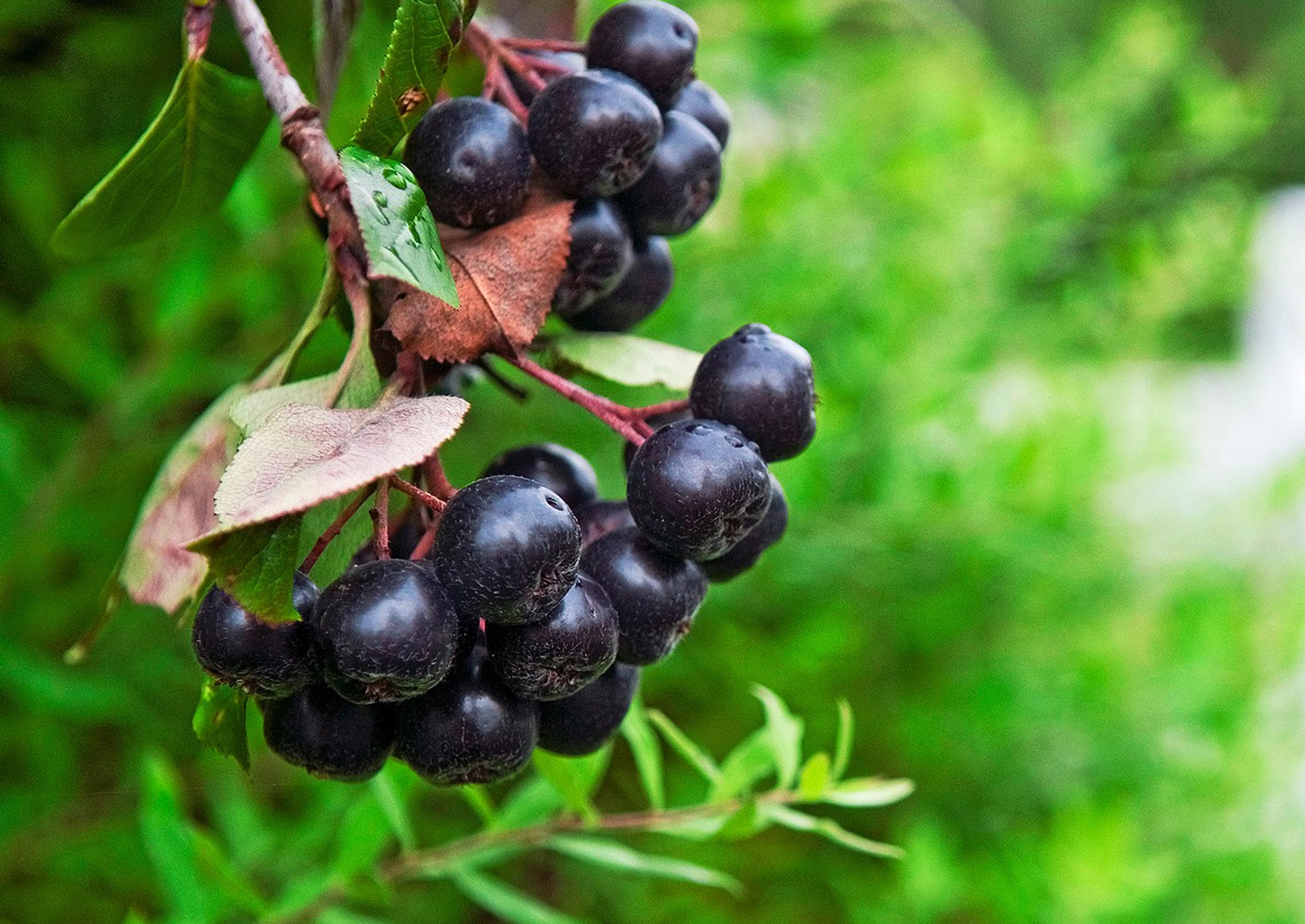
Chokeberry pruning made easy—here’s how to do it right
Chokeberries, also known as aronias, are hardy and low-maintenance shrubs—but regular pruning helps them stay healthy and productive. In this guide, you’ll learn everything about chokeberry pruning: when to do it, what tools to use, and how to shape your bushes for the best results.
What’s the difference between purple chokeberry and Mitschurin's chokeberry?
Purple chokeberry and edbile chokeberry are very similar. Both species are often grown as ornamental shrubs or hedges in home gardens.
Mitschurin's chokeberry species have larger leaves and berries than purple chokeberry species. You can also use purple chokeberry’s berries in baking or preserving, just like Mitschurin's chokeberry.
Are purple chokeberry hedges and Mitschurin's chokeberry hedges pruned the same way?
Yes. Both chokeberry varieties are pruned the same way.
What’s the difference between a chokeberry hedge and a hedgerow?
A chokeberry hedge refers to a trimmed, formal hedge where new shoots are cut back each year.
A hedgerow, on the other hand, is a row of loosely spaced, free-growing chokeberry bushes that aren’t pruned regularly. Instead, you thin them out by removing a few of the oldest branches as needed.
How often should you prune a Mitschurin's chokeberry or purple chokeberry hedge?
If you want a shaped, dense hedge that stays green from top to bottom, prune Mitschurin's or purple chokeberry at least once a year, starting with the planting year.
When and how much should a chokeberry hedge be pruned?
A formal chokeberry hedge is usually trimmed from late June to late July, once early summer growth has slowed. If the hedge is young and still growing, leave about 15 cm (6 in) of new growth. If it has reached your desired height, you can trim more aggressively, leaving around 5 cm (2 in). If it keeps growing vigorously later in the summer, you can even it out the following spring, before leaves emerge—usually in March or April.
How should a chokeberry hedge be pruned?
It’s generally best to shape the hedge so that the bottom is wider than the top. If the top is wider, it will shade the lower branches, causing leaves to wither from lack of light and leaving the bottom bare. Both Mitschurin's chokeberry and purple chokeberry are naturally upright and can be challenging to form into a classic A-shape, as the upper part tends to be denser than the base. Focus on keeping the hedge’s profile as straight as possible.
Can you prune chokeberry in the fall?
Yes, you can prune chokeberry in the fall. Chokeberry tolerates pruning well, especially if it’s healthy and strong. However, spring remains the best time to prune chokeberry bushes.
When and how do you perform the initial pruning of a newly planted chokeberry hedge?
When planting chokeberry hedge saplings, cut all branches back to stubs of about 10–20 cm (4–8 in). This first pruning is best done in spring, while the shrub is dormant and leafless. If your chokeberry saplings already have branches, you may not need to prune them at this stage.
If you plant saplings in the fall, prune them the following spring to maintain winter hardiness. Saplings planted in spring can be pruned at planting or the next spring in March or April, before new growth starts.
Does pruning make Mitschurin's chokeberry bushier?
Both Mitschurin's chokeberry and purple chokeberry tend to be sparse at the base. Pruning will not remove this trait.
Remove any damaged, dry, or drooping branches from Mitschurin's chokeberry. The shrub can recover even if cut down entirely. However, if you want berries, thin it by removing a few branches each year.


